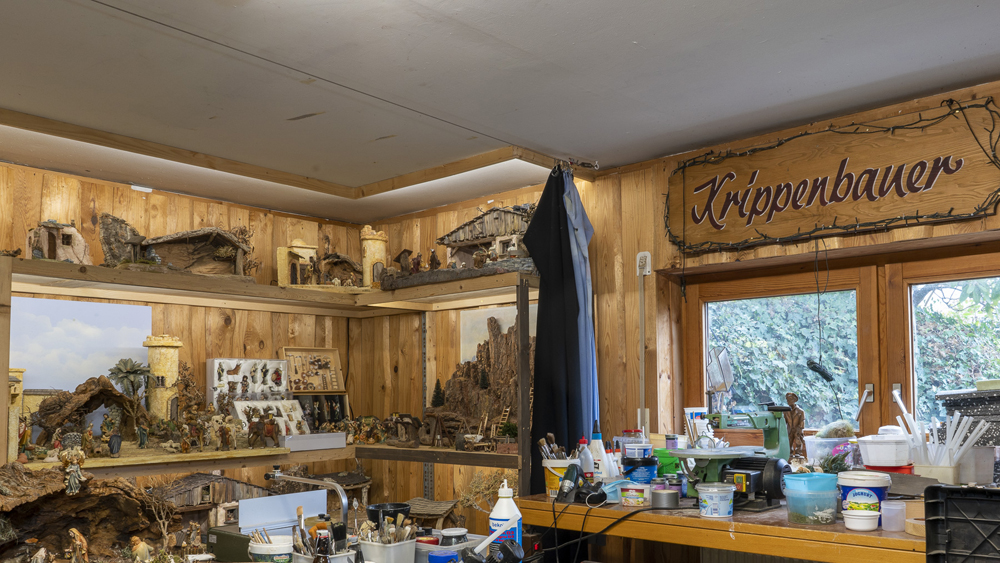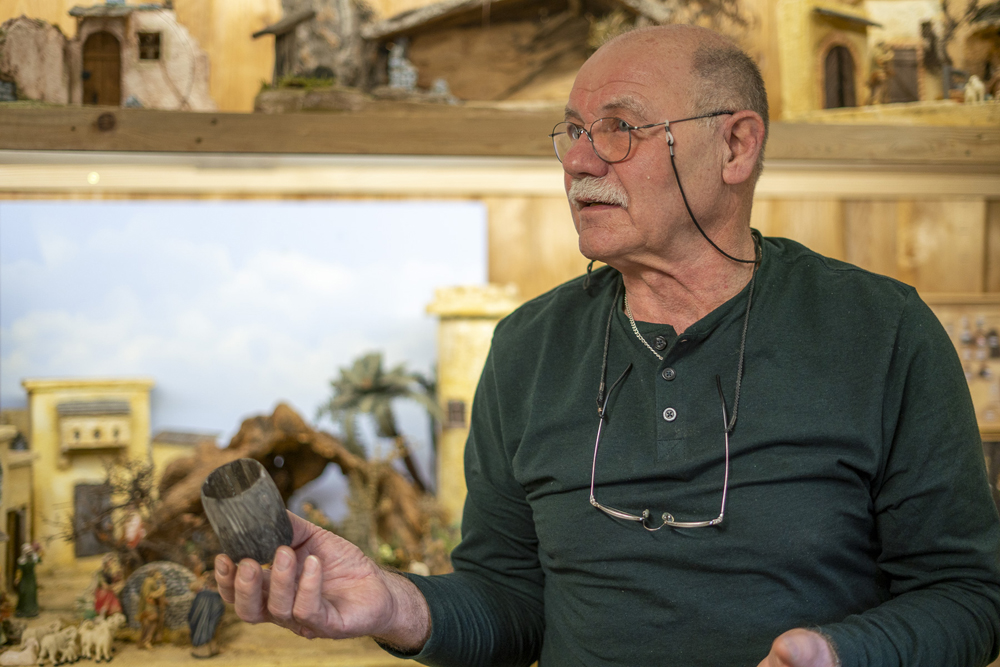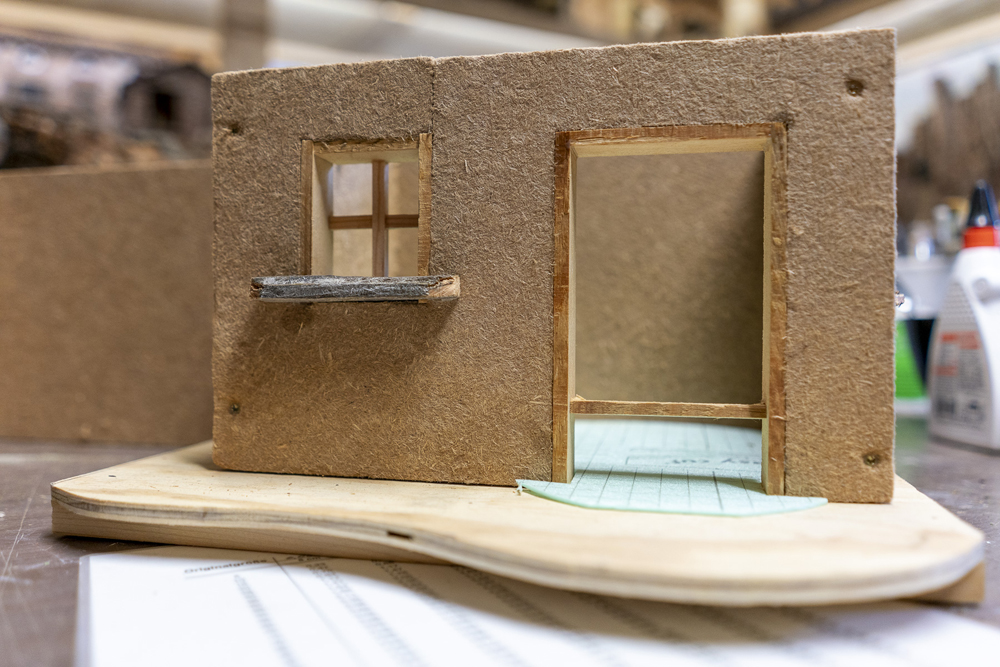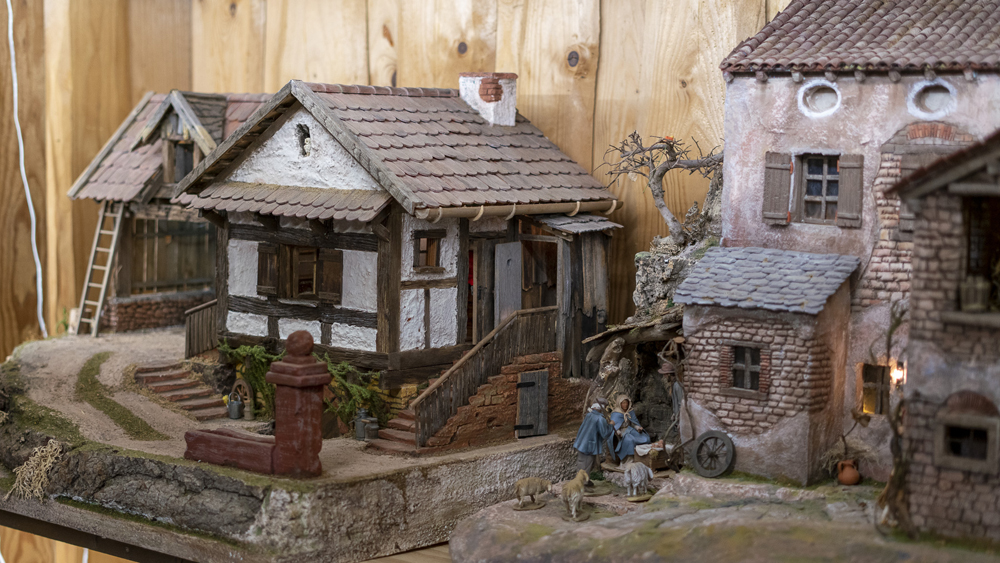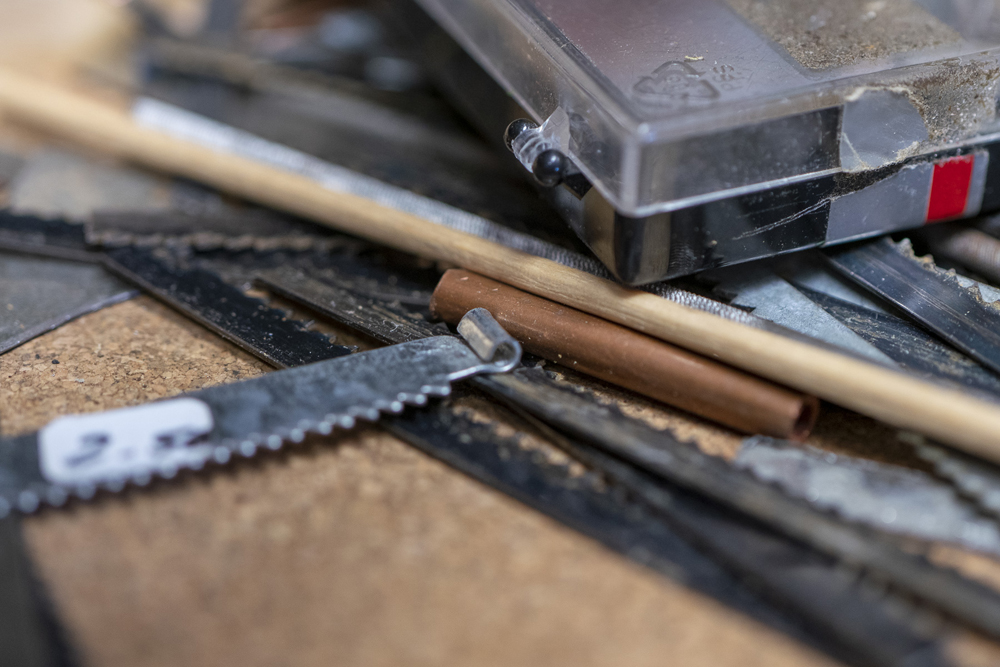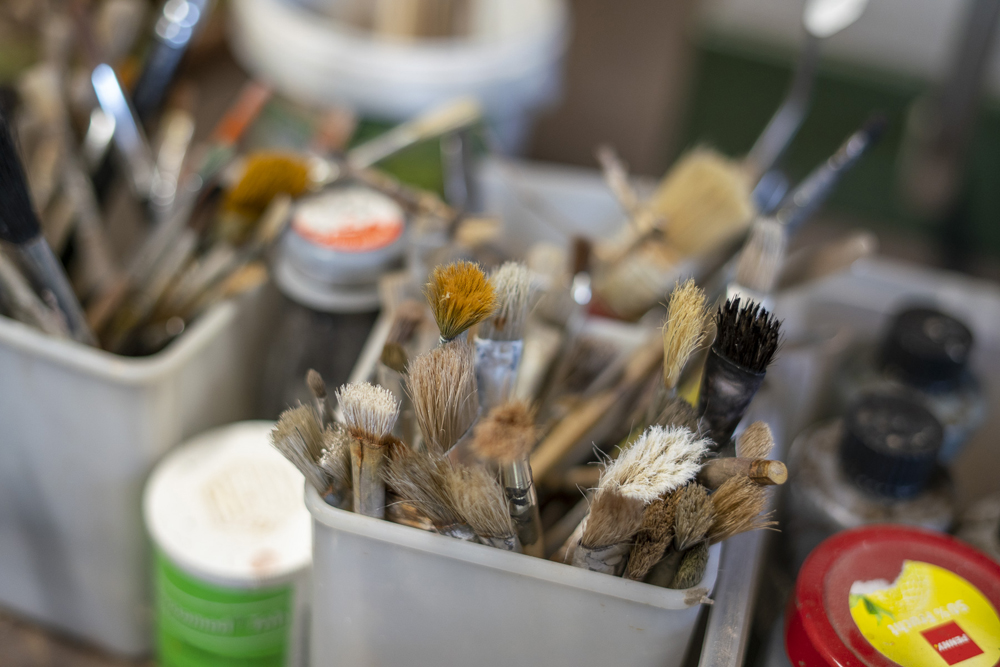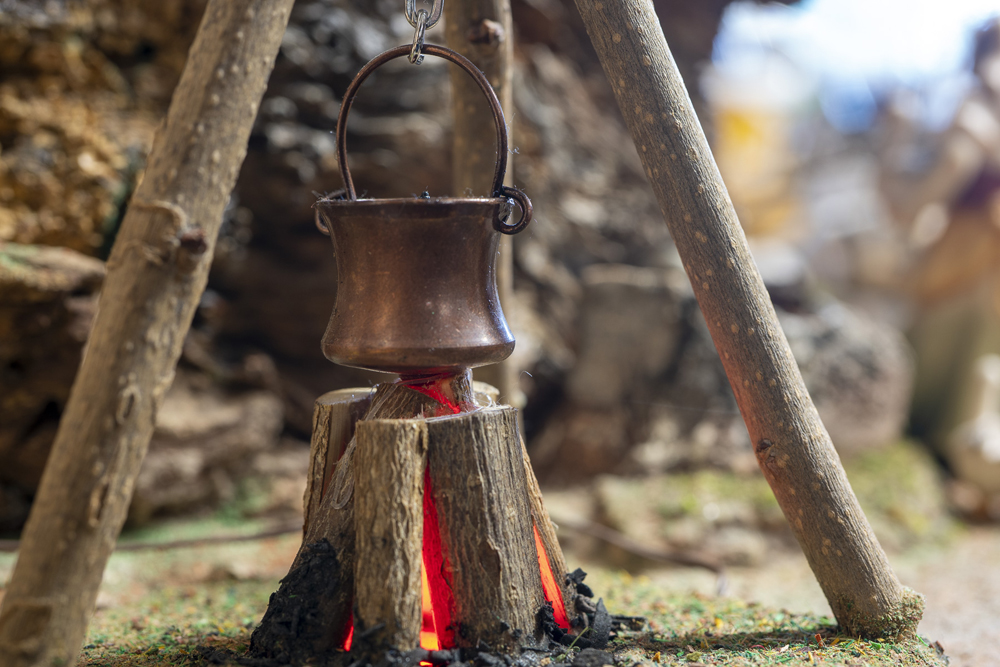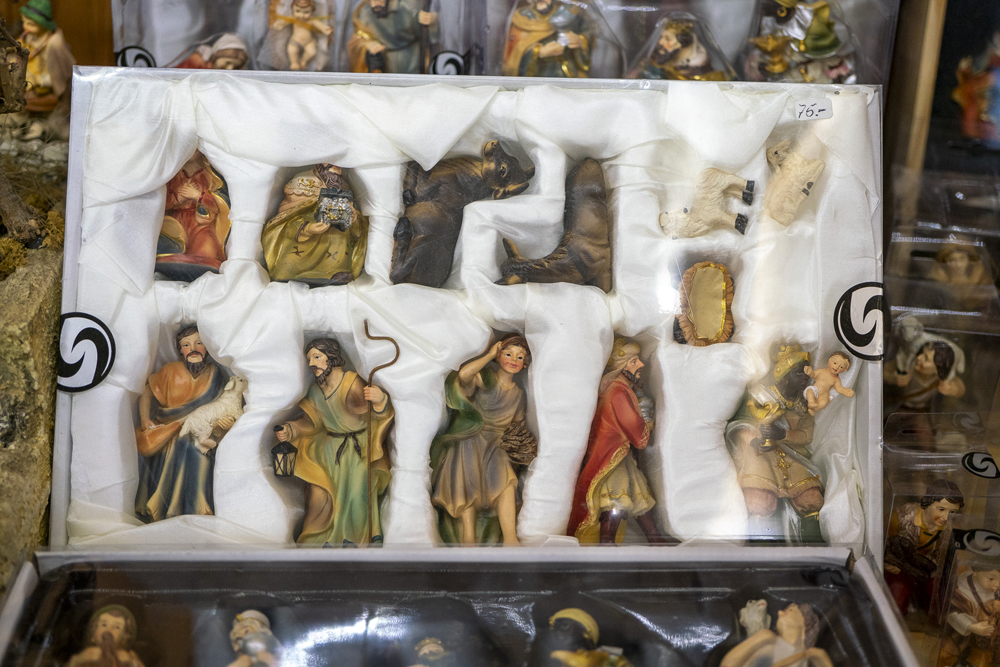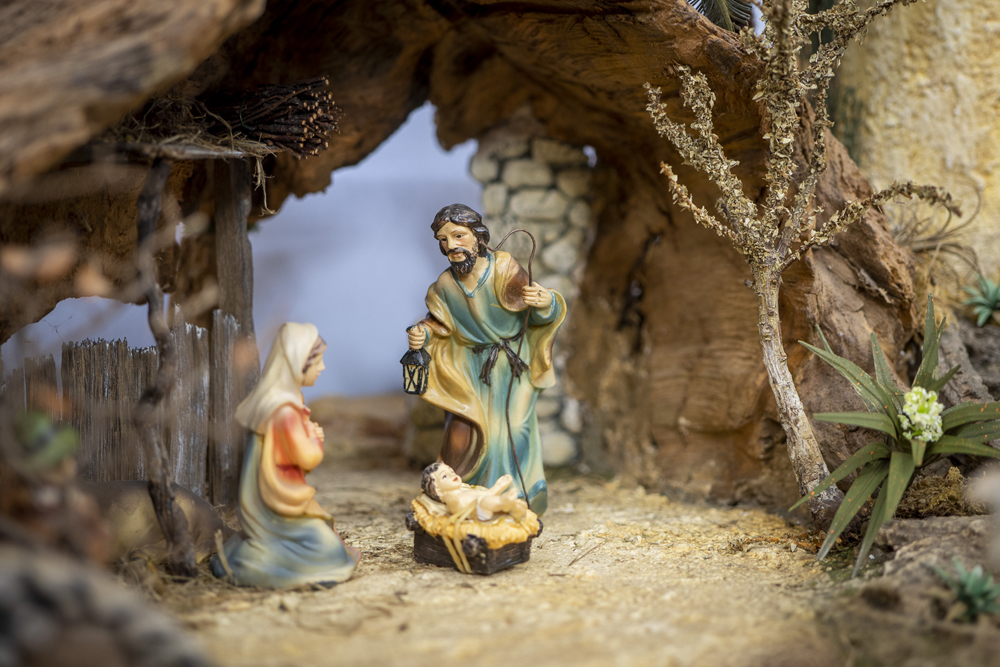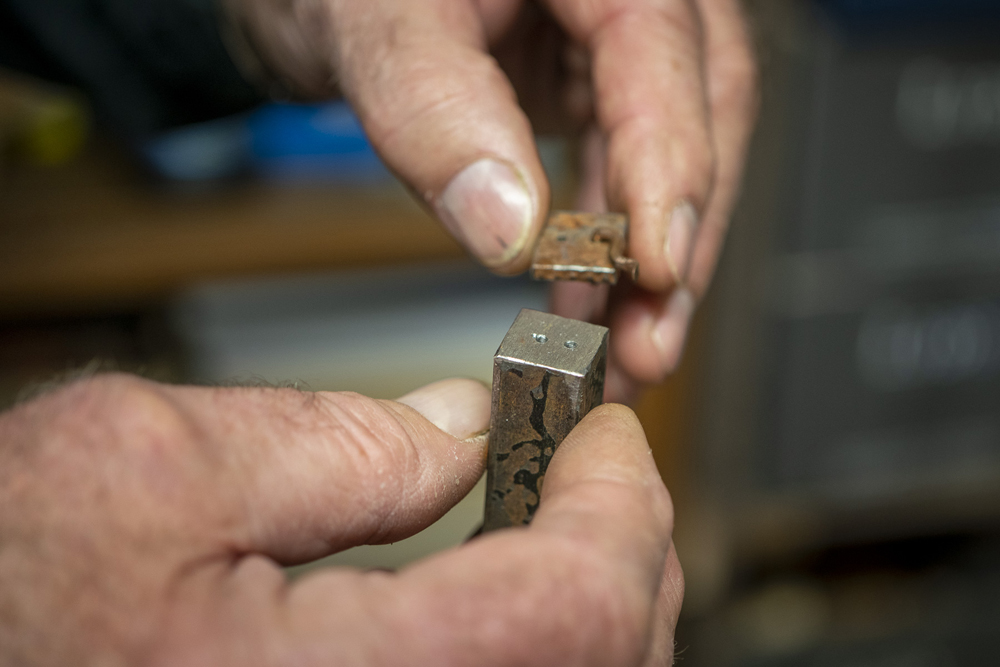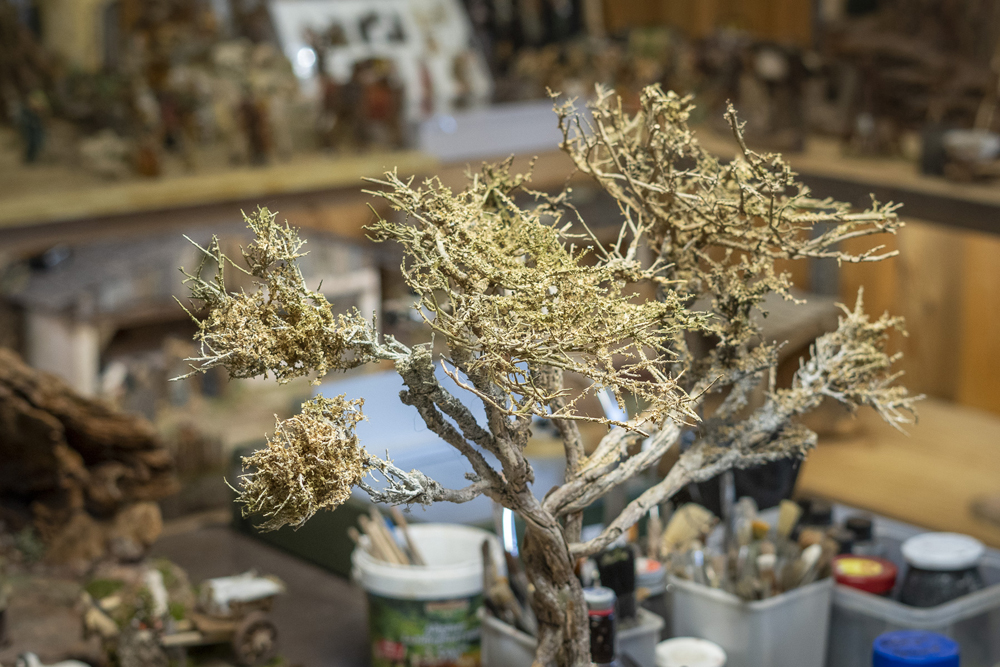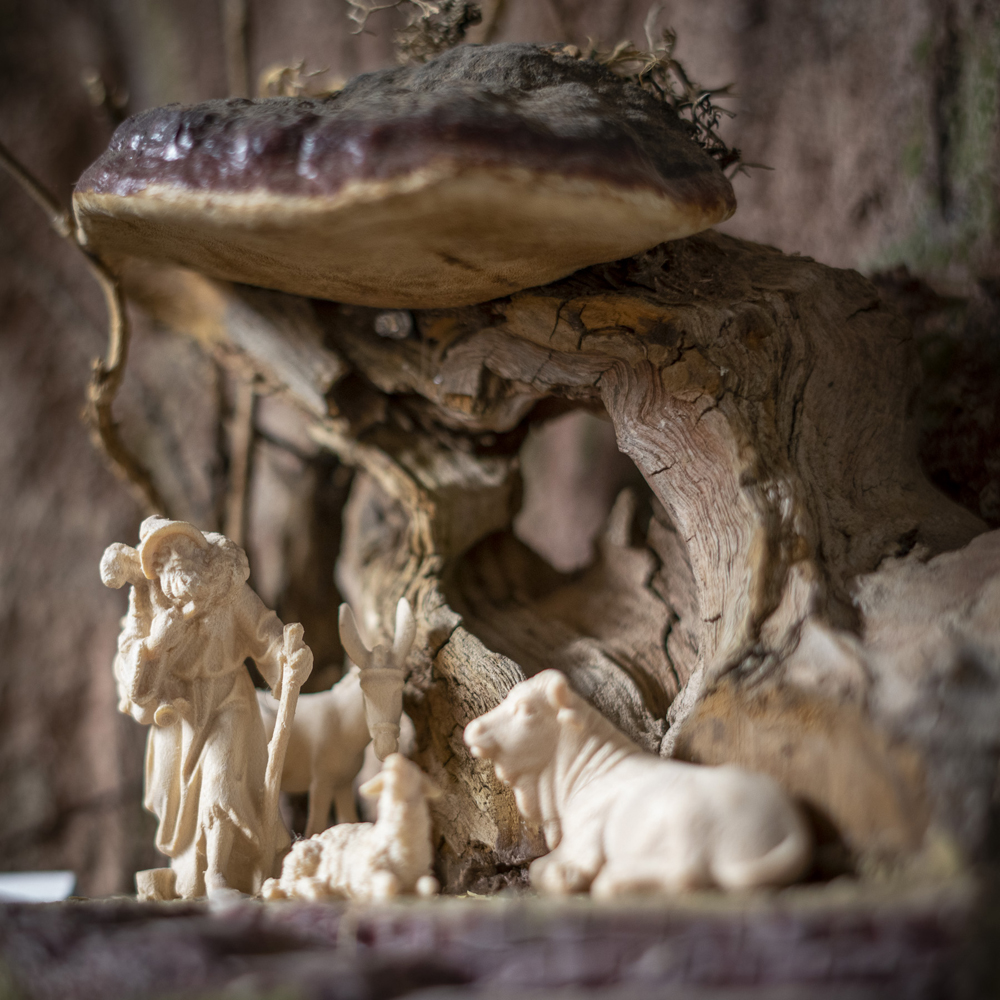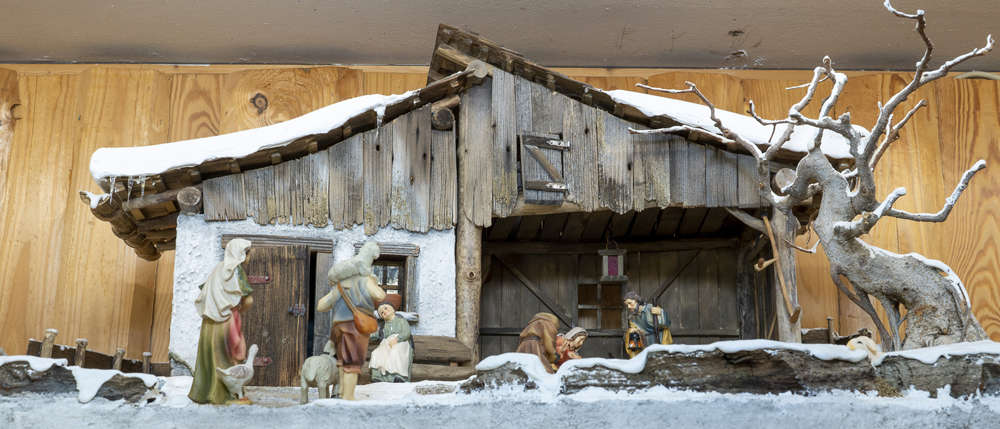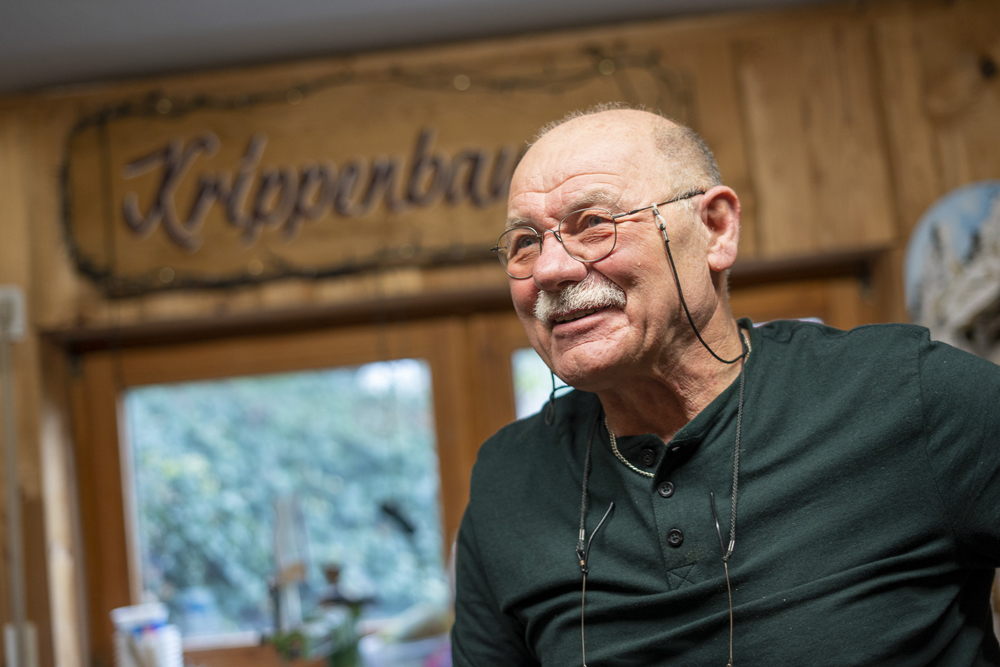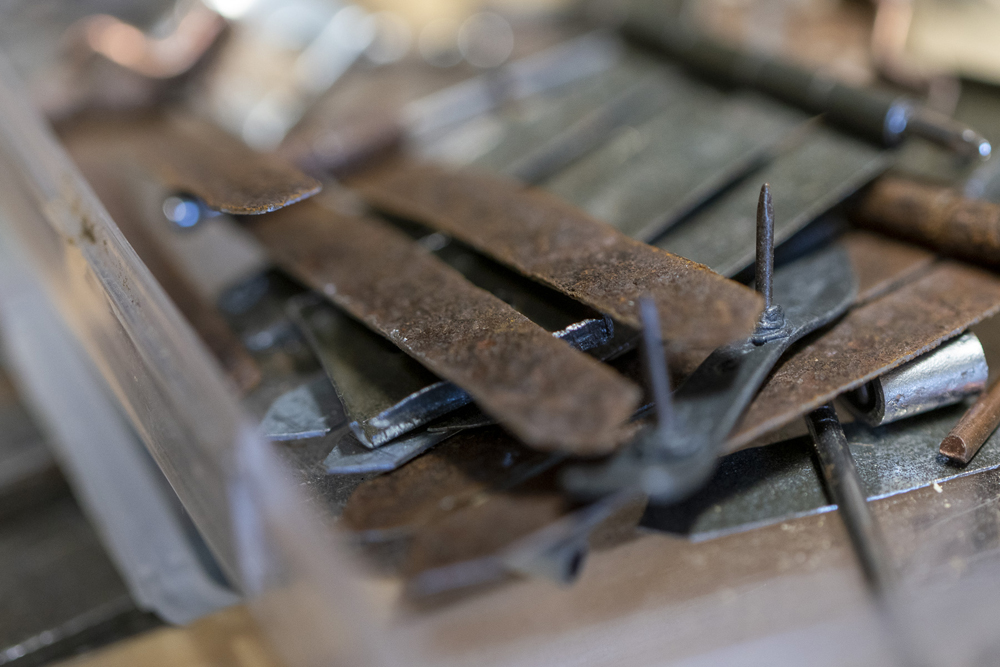The manger maker Lutz Kuhl is a master of his trade. Over and over again, new versions of the representation of the birth of Christ see the light of day in his workshop in Annweiler—with great attention to detail, and with unusual tricks.
Everything in this Italian cottage is made by hand. The brown window shutters, the pinky-grey plaster and even the tiles on the roof. Lutz Kuhl shapes each of the tiny tiles of rigid foam, rolls them along a pencil and paints them. Under the wooden roof of the neighbouring barn, Mary and Joseph look at their child: wrapped in swaddling clothes and lying in a manger. It’s the details that matter, when Lutz reconstructs the scene of the birth of Jesus—be it in a cottage near Naples, in a Palatinate half-timbered barn or, true to the Bible, in the Orient. An average of 60 hours pass between the birth of the idea and the completion of the manger; it may, however, take even much longer. Lutz is not a person you can rush: “The trickier it gets, the more I calm down.”
In a bright room in the basement of his house in Annweiler, Lutz potters about with his mangers. With colours and saws, with timber and rigid foam, with a glass full of oregano and with a bottle of beer. Figures stored in drawers wait for their cue. Brushes in all shapes and colours lie on the table. The completed masterpieces are lined up in illuminated shelves. Lutz is a master car mechanic by profession. However, you’re wrong, if you think that his earlier profession and his later vocation don’t have much in common. His job in the car repair shop used to be diverse and varied. And so is his work with mangers. He starts off with a power saw in the garden to cut a piece of timber to size until he finally picks up a scalpel to do the precision work.
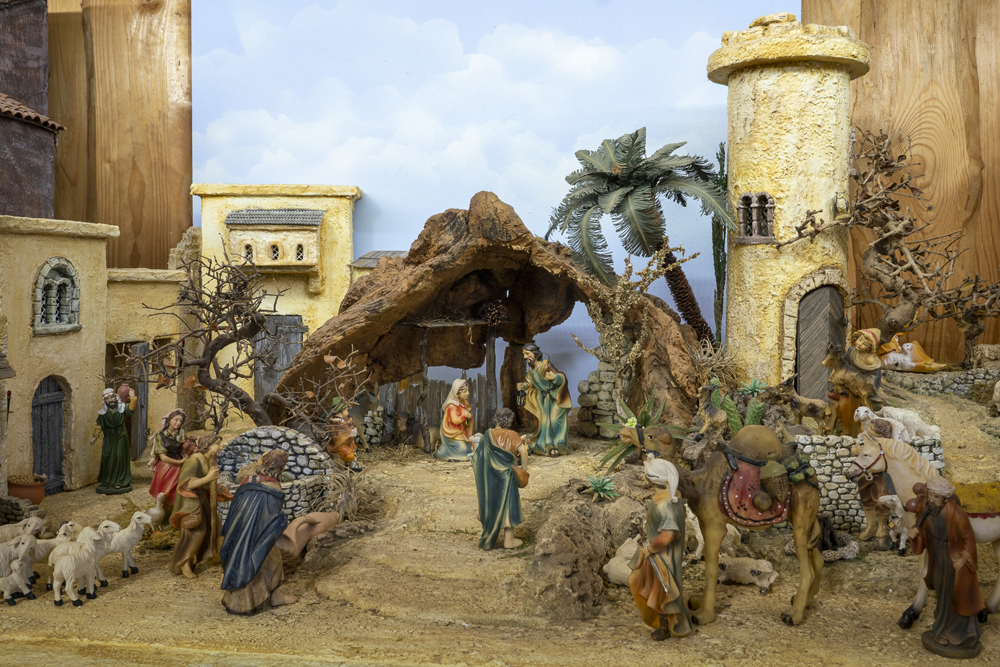
Lutz is an architect – equipped with colours and saws, with timber and rigid foam, with a glass full of oregano and with a bottle of beer.
It all began some 30 years ago. Back then, Lutz used to fiddle about a lot on his train set in his leisure time. One day, his children asked him to give them a manger. From then on, one thing led to another. His relatives began to take notice of his works and he went on and on. “I made mangers one after another until 2012. Then, I realized I was stagnating.” So he started to train as a course director; in 2015, he was awarded the title of Krippenbaumeister (master manger maker) by a Bavarian manger supporters association; he has exhibited and sold his works and equipment on the Landau Christmas market since 2014; and he has passed his knowledge on to future manger makers in cooperation with the Volkshochschule adult education centre in Annweiler am Trifels since 2018.

